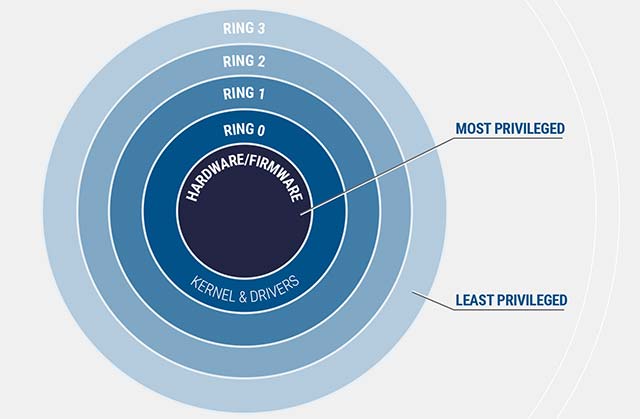More than 40 Windows drivers contain dangerous privilege escalation vulnerabilities
Researchers from the Eclypsium network security company recently announced a shocking disclosure, that there are more than 40 different drivers, derived from 20 hardware vendors certified by Microsoft. Receiving or hiding vulnerabilities or poor code can be exploited by hackers to conduct privileged escalation attacks, thereby hijacking remote systems.
Specifically in DEF CON 2019, one of the biggest security - cyber security conferences of the year has just taken place in Las Vegas, the team of researchers from Eclypsium has published a list of 'solid'. BIOS vendors are also affected by hardware manufacturing units, including the names that are making up the largest market share such as ASUS, Huawei, Intel, NVIDIA and Toshiba.
- Microsoft releases a new Windows 10 update, Microsoft Edge will be hidden if you install Edge Chromium
 These drivers come from 20 hardware vendors that have been certified by Microsoft
These drivers come from 20 hardware vendors that have been certified by Microsoft
Notably, these drivers are relevant and are used on nearly all current versions of Windows, which means millions of people around the world are at risk of becoming victims of attacks. Dangerous privilege escalation.
These drivers are capable of enabling malicious applications to gain kernel privileges at the user level, thereby gradually gaining direct access to the firmware and ultimately target hardware.
Also because malware can be installed directly into the firmware, so reinstalling the operating system is not a solution that can be effective in this case.
- Windows Defender is one of the best antivirus applications in the world
All of the vulnerabilities found allow the driver to act as a proxy to enforce access with high privileges on hardware resources, such as being able to read and write data to the I / O space of processor and chipset (MSR), Model Specific Registers (MSR), Control Registers (CR), Debug Registers (DR), besides both physical memory and kernel virtual memory.
This is a privilege escalation because it can help an attacker switch from user mode (Ring 3) to kernel OS mode (Ring 0). The concept of protection rings is briefly described in the image illustrated below, in which the deeper inside will require more system privileges.
- Choose which antivirus software to install on Windows 10 / 8.1 / 7 and this is Microsoft's recommendation
 The protection rings in Windows, the deeper inside will require more system privileges
The protection rings in Windows, the deeper inside will require more system privileges
It is important to note that even ordinary system administrators only own the privileges to operate at Ring 3 (rarely enter deeper). The ability to access the kernel (Ring finally) can not only give attackers the highest level of access privilege available to the operating system, but can also help them own more access to the operating system. interface hardware and firmware with even higher privileges such as the system's BIOS firmware.
If a driver containing a vulnerable vulnerability is present on your system, the malicious application will only need to search for that driver name and exploit to raise privileges. Otherwise, if the driver containing the vulnerability does not exist in the system, the malicious application can still bring the driver for the error itself, but it needs an administrator's approval to install it now. these drivers.
'Driver not only provides the necessary privileges, but also possesses mechanisms to make changes'.
In a statement to ZDNet, Mickey Shkatov, a cyber security expert headed by the Eclypsium team, said:
"Microsoft will use the HVCI feature (Code Integrity) implemented by Hypervisor) for our blacklisted drivers."
However, this feature will only be available on 7th and newer Intel processors. HCVI will be disabled on older version CPUs, so if you want to uninstall faulty drivers, you will have to do it manually.
Besides, Microsoft also said:
"To exploit the vulnerability-prone drivers, hackers will first be forced to infiltrate the victim's computer."
Typically, attackers will invade the system at Ring 3 privilege level, then they will try to gain access to the kernel.
Security recommendations made by Microsoft are as follows:
- Control the Windows Defender application to block vulnerable drivers and software.
- Users can further protect themselves by activating memory integrity for devices that are likely to be hacked in under Windows Security.

- What is Windows Core? Is it the future of Windows operating system?
Here is the complete book of all providers who have completed the driver update process:
- ASRock
- ASUSTeK Computer
- ATI Technologies (AMD)
- Biostar
- EVGA
- Getac
- GIGABYTE
- Huawei
- Insyde
- Intel
- Micro-Star International (MSI)
- NVIDIA
- Phoenix Technologies
- Realtek Semiconductor
- SuperMicro
- Toshiba
You should read it
- Hacker revealed the second Zero-Day, broke Windows' EoP vulnerability patch
- New privilege escalation vulnerability called 'Dirty Pipe' is threatening all Linux distros
- Discovering a new zero-day vulnerability in Steam, more than 100 million users may be affected
- Vulnerability discovered in ESET anti-virus software could allow hackers to gain system privileges on Windows
- New Vulnerability in Windows 10 Allows Admin Hijacking
- AMD patched a series of security holes in the graphics driver for Windows 10
 Even DSLR cameras can be easily attacked by ransomware
Even DSLR cameras can be easily attacked by ransomware Secure desktop application - weaknesses are often overlooked
Secure desktop application - weaknesses are often overlooked Twitter appears 'error' that causes user information to be approached by third-party advertising providers
Twitter appears 'error' that causes user information to be approached by third-party advertising providers Discovering a new zero-day vulnerability in Steam, more than 100 million users may be affected
Discovering a new zero-day vulnerability in Steam, more than 100 million users may be affected Hackers can bypass the Face ID face with just a pair of black adhesive tape
Hackers can bypass the Face ID face with just a pair of black adhesive tape British Airways has a systematic, delaying 'error' at many airports in the UK, customers dumping stone tiles on Twitter
British Airways has a systematic, delaying 'error' at many airports in the UK, customers dumping stone tiles on Twitter